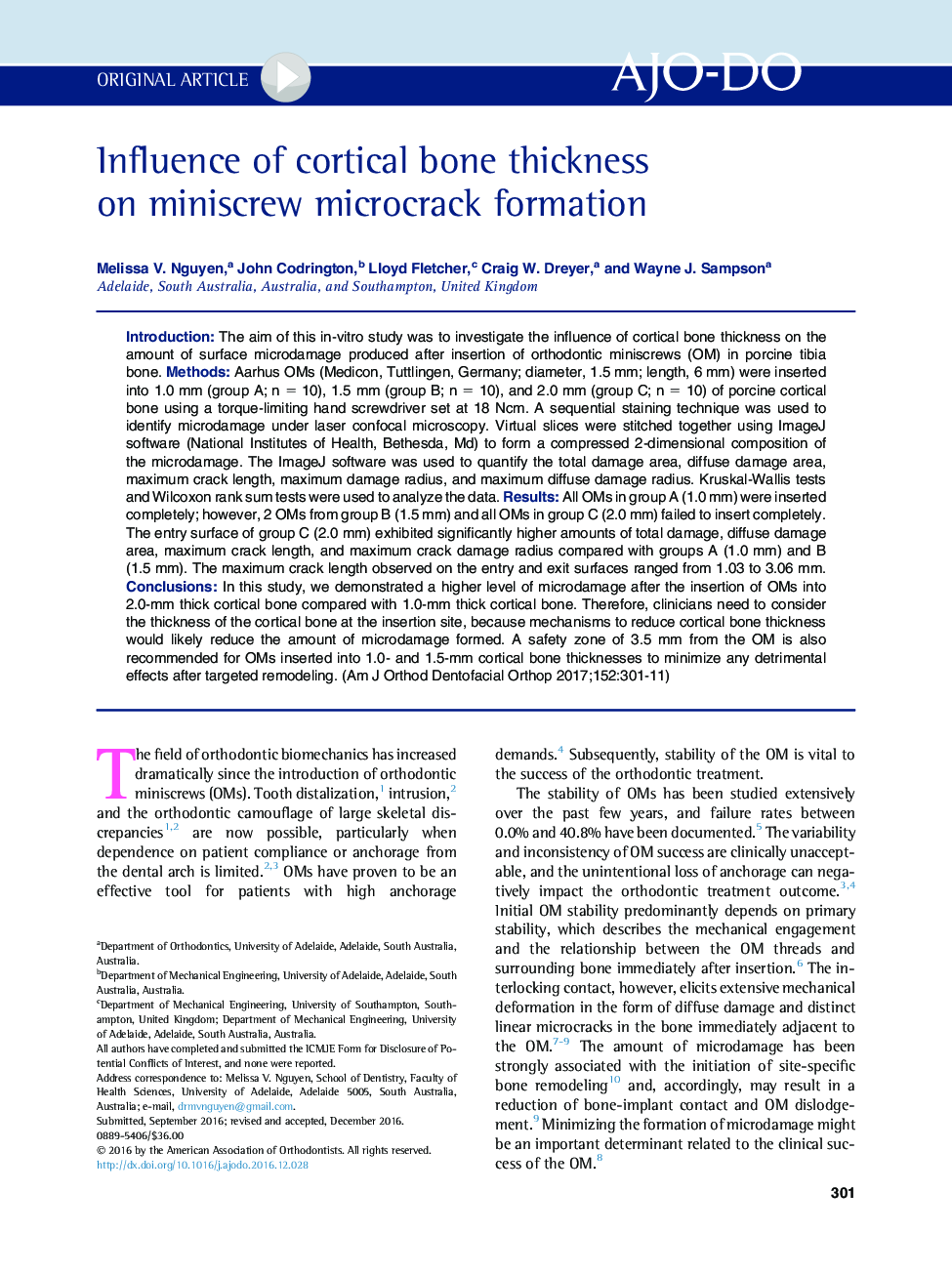| Article ID | Journal | Published Year | Pages | File Type |
|---|---|---|---|---|
| 5637446 | American Journal of Orthodontics and Dentofacial Orthopedics | 2017 | 11 Pages |
â¢Cortical bone thickness affects the amount of microdamage after miniscrew insertion.â¢Significant microdamage was seen when miniscrews were placed in 2-mm thick bone.â¢Less microdamage occurred when bone was 1 or 1.5 mm thick.â¢Clinicians should consider cortical bone thickness at the insertion site.â¢A 3.5-mm safety zone should be used for miniscrews in 1- to 1.5-mm thick bone.
IntroductionThe aim of this in-vitro study was to investigate the influence of cortical bone thickness on the amount of surface microdamage produced after insertion of orthodontic miniscrews (OM) in porcine tibia bone.MethodsAarhus OMs (Medicon, Tuttlingen, Germany; diameter, 1.5 mm; length, 6 mm) were inserted into 1.0 mm (group A; n = 10), 1.5 mm (group B; n = 10), and 2.0 mm (group C; n = 10) of porcine cortical bone using a torque-limiting hand screwdriver set at 18 Ncm. A sequential staining technique was used to identify microdamage under laser confocal microscopy. Virtual slices were stitched together using ImageJ software (National Institutes of Health, Bethesda, Md) to form a compressed 2-dimensional composition of the microdamage. The ImageJ software was used to quantify the total damage area, diffuse damage area, maximum crack length, maximum damage radius, and maximum diffuse damage radius. Kruskal-Wallis tests and Wilcoxon rank sum tests were used to analyze the data.ResultsAll OMs in group A (1.0 mm) were inserted completely; however, 2 OMs from group B (1.5 mm) and all OMs in group C (2.0 mm) failed to insert completely. The entry surface of group C (2.0 mm) exhibited significantly higher amounts of total damage, diffuse damage area, maximum crack length, and maximum crack damage radius compared with groups A (1.0 mm) and B (1.5 mm). The maximum crack length observed on the entry and exit surfaces ranged from 1.03 to 3.06 mm.ConclusionsIn this study, we demonstrated a higher level of microdamage after the insertion of OMs into 2.0-mm thick cortical bone compared with 1.0-mm thick cortical bone. Therefore, clinicians need to consider the thickness of the cortical bone at the insertion site, because mechanisms to reduce cortical bone thickness would likely reduce the amount of microdamage formed. A safety zone of 3.5 mm from the OM is also recommended for OMs inserted into 1.0- and 1.5-mm cortical bone thicknesses to minimize any detrimental effects after targeted remodeling.
